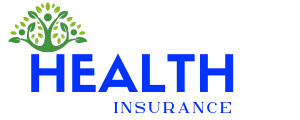In today’s healthcare landscape, finding an affordable health insurance plan that suits your individual or family needs is essential. The right plan provides access to medical services, preventive care, and financial protection against unexpected healthcare expenses. From understanding various types of health insurance coverage to using online tools and government programs, this guide will cover essential tips and resources for finding affordable and effective health insurance plans.
Types of Health Insurance Coverage
There are multiple types of health insurance coverage, each catering to different needs and financial situations. Understanding the main categories can help you make an informed decision.
Overview of Health Maintenance Organizations (HMO)
Health Maintenance Organizations (HMOs) are known for their affordability and ease of management. HMO plans typically require you to select a primary care physician (PCP) who manages your healthcare and refers you to specialists within the HMO network. These plans cover only in-network care except for emergencies, making them an ideal option for those who are comfortable with a limited provider network.
Understanding Preferred Provider Organizations (PPO)
Preferred Provider Organizations (PPOs) offer greater flexibility than HMOs. While PPO plans have higher premiums, they allow you to access both in-network and out-of-network providers without needing referrals. PPOs are best for individuals and families who want more control over their healthcare choices and are willing to pay a bit extra for that flexibility.
Exploring High-Deductible Plans with Health Savings Accounts (HSAs)
High-Deductible Health Plans (HDHPs) typically have lower premiums and higher deductibles. These plans are often paired with Health Savings Accounts (HSAs), which allow you to save pre-tax money for medical expenses. HDHPs with HSAs are a good fit for healthy individuals who don’t expect frequent medical visits and want the tax benefits of an HSA.
Utilizing Official Health Plan Marketplaces
Government-run health insurance marketplaces provide options for individuals and families to find coverage, compare costs, and apply for subsidies. These official exchanges are tailored to each state, ensuring that residents can access plans designed for their region.
Benefits of Covered California
Covered California is California’s health insurance marketplace, where residents can find plans that meet the requirements of the Affordable Care Act (ACA). The platform offers a range of plans with various premiums and deductibles, and Californians may qualify for subsidies to lower their costs. Covered California also provides dental coverage options for adults and families.
Exploring New York State of Health
New York State of Health is New York’s health insurance marketplace, offering a selection of affordable health insurance plans for individuals and families. New Yorkers can browse plans that meet ACA standards and access tax credits if they qualify. The marketplace also features Medicaid and Child Health Plus for low-income residents, as well as the Essential Plan for moderate-income individuals.
How to Find Tailored Solutions
Most state health insurance marketplaces provide options to browse and compare plans, helping families and individuals find tailored coverage. Subsidies and tax credits are available for those who qualify, reducing the cost of premiums. When searching for affordable health insurance, start by entering your income and household information to see which programs and subsidies you may be eligible for.
Evaluating Benefits and Limitations
Different health insurance plans offer unique benefits and limitations. Understanding these can help you choose a plan that maximizes your healthcare access while minimizing out-of-pocket expenses.
Common Benefits of Health Insurance Plans
Most health insurance plans cover essential health benefits, including preventive care, emergency services, maternity care, mental health treatment, and prescription medications. These benefits ensure you have access to necessary care without financial strain.
Importance of Dental and Vision Coverage
While many health insurance plans offer extensive medical benefits, not all cover dental or vision care. Some plans offer these as add-ons or provide standalone policies. If dental and vision coverage are important for your family, look for plans that include these options or consider purchasing additional policies.
Acknowledging Limitations of Different Plans
Each health plan has limitations that impact coverage, such as in-network restrictions or high out-of-pocket maximums. HMO plans, for example, limit provider choice, while HDHPs may leave you with substantial upfront costs. Consider your medical needs and financial situation to understand the limitations and choose a plan that aligns with your circumstances.
Navigating Medicare and Medicaid
Medicare and Medicaid offer coverage for specific populations, including low-income families, elderly individuals, and those with disabilities.
Eligibility Requirements for Medicare
Medicare is primarily available to individuals over 65 and younger individuals with certain disabilities. Part A covers hospital care, while Part B covers outpatient services. Medicare Advantage (Part C) and Medicare Prescription Drug Plans (Part D) offer additional coverage options. Medicare eligibility is based on age, work history, and certain health conditions.
Understanding Medicaid Coverage Options
Medicaid provides health insurance for low-income families and individuals, covering a range of services, including hospital stays, doctor visits, and long-term care. Eligibility varies by state, with income being a significant factor. Medicaid also offers special programs for children, pregnant women, and individuals with disabilities.
Key Considerations for Medicare Open Enrollment
Medicare Open Enrollment occurs annually, allowing beneficiaries to switch plans or adjust their coverage. During this period, Medicare Advantage and Part D plans can be changed based on changing healthcare needs, new medications, or provider networks. Reviewing your Medicare coverage yearly can ensure you’re maximizing benefits and minimizing costs.
Tools for Managing Health Insurance Plans
Managing health insurance effectively can be streamlined with the help of online tools and resources provided by insurers.
Introduction to MyCigna
MyCigna is an online tool offered by Cigna that allows members to manage their healthcare and insurance. Through MyCigna, users can view claims, check coverage, and find in-network providers. Tools like MyCigna help individuals and families keep track of their healthcare spending and manage their health insurance plans efficiently.
Using Plan Management Tools Effectively
Most insurance providers offer digital tools to manage claims, track expenses, and monitor healthcare usage. Familiarizing yourself with these tools can help you stay on top of your coverage, manage out-of-pocket costs, and avoid unexpected charges.
Comparing and Evaluating Health Insurance Plans
When choosing a health insurance plan, careful comparison and evaluation can help you find the most affordable and beneficial option.
Criteria for Comparison
Consider factors like premium costs, deductibles, copayments, and out-of-pocket maximums. Look for plans with benefits that align with your medical needs, and consider potential subsidies or tax credits that can make plans more affordable.
Understanding Financial Implications
Premiums are only one part of health insurance costs. High-deductible plans may have lower premiums but require significant upfront payments, whereas HMO and PPO plans balance premium costs with network restrictions. Understanding these implications can help you choose a plan that balances monthly costs and medical expenses effectively.
Tips for Making Informed Choices
Research the provider network, available benefits, and any limitations before enrolling in a plan. Reading reviews of health insurance providers can offer insight into customer service and claims processing, helping you make an informed choice.
FAQs
What is the best health insurance option for families?
The best option depends on your family’s specific healthcare needs and budget. PPOs and HMOs are popular choices for families due to their network benefits, while HDHPs with HSAs may be suitable if your family has low healthcare needs.
How can I lower my health insurance costs?
Lowering health insurance costs can be achieved by selecting high-deductible plans, qualifying for subsidies, and using in-network providers. Regularly reviewing your plan and considering preventive care options can also help minimize expenses.
What should I do if I don’t qualify for subsidies?
If you don’t qualify for subsidies, explore alternative options like short-term health plans, high-deductible plans, or catastrophic coverage (if eligible). You can also check for employer-sponsored options or group plans that may offer more affordable premiums.
Conclusion: Making Health Insurance Affordable for Individuals and Families
Finding an affordable health insurance plan that offers meaningful coverage for individuals and families is achievable with the right approach. Start by understanding the types of plans available, explore state and federal health insurance marketplaces, and utilize tools to manage your plan efficiently. Whether you’re navigating private insurance, Medicare, or Medicaid, the resources and strategies in this guide can help you secure a health insurance plan that fits both your healthcare needs and budget.

